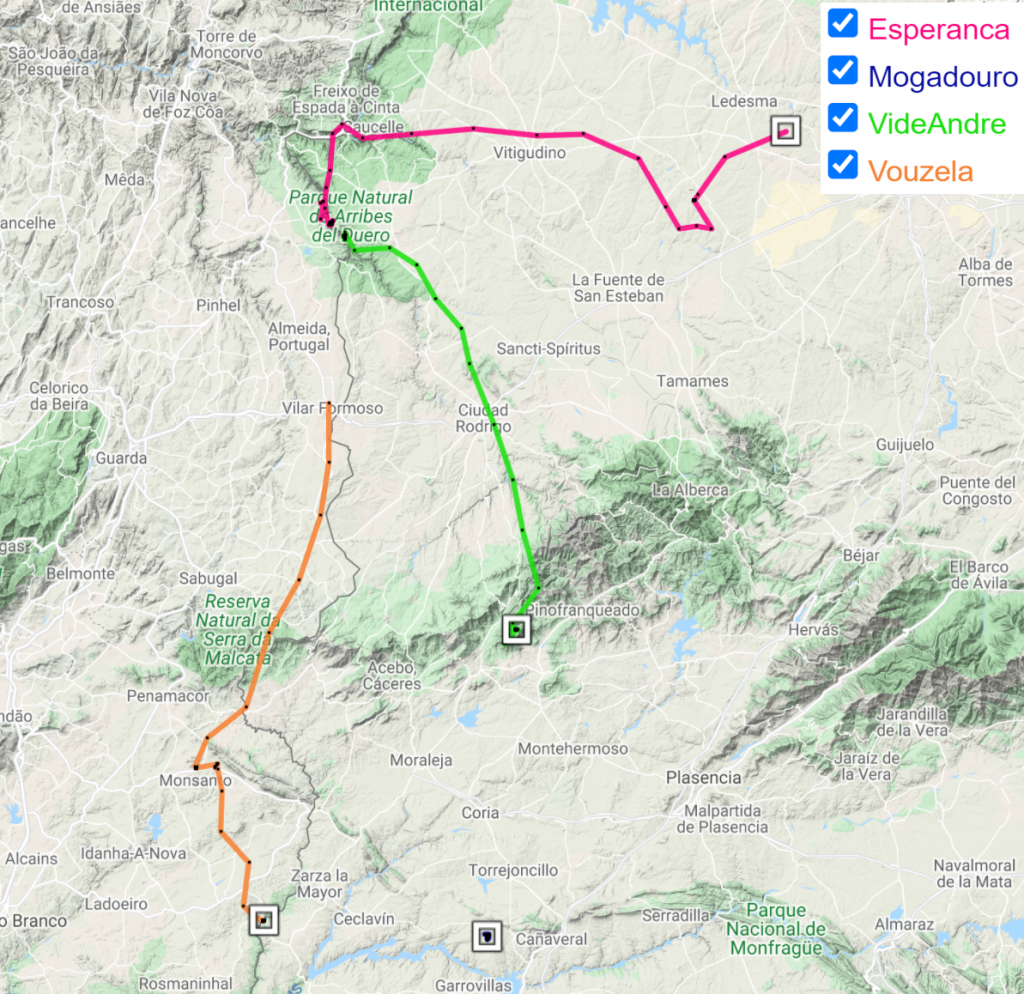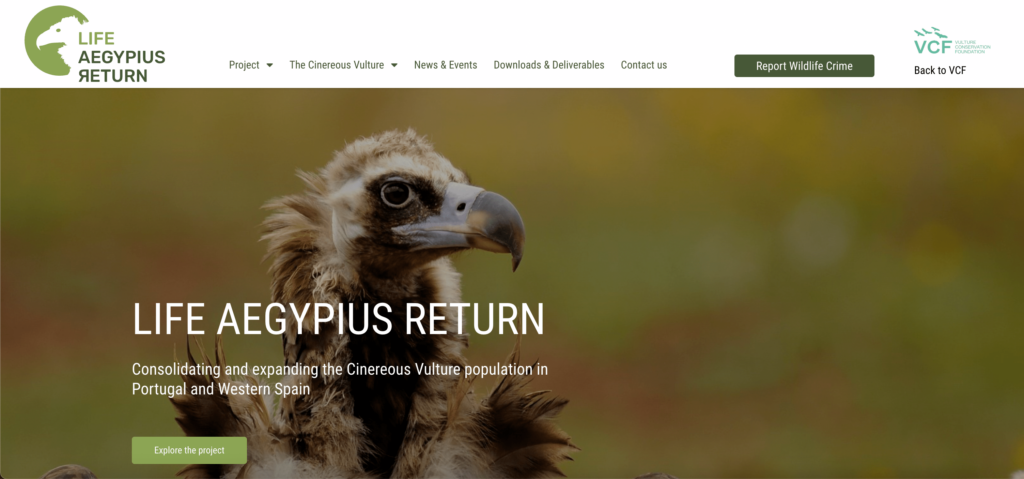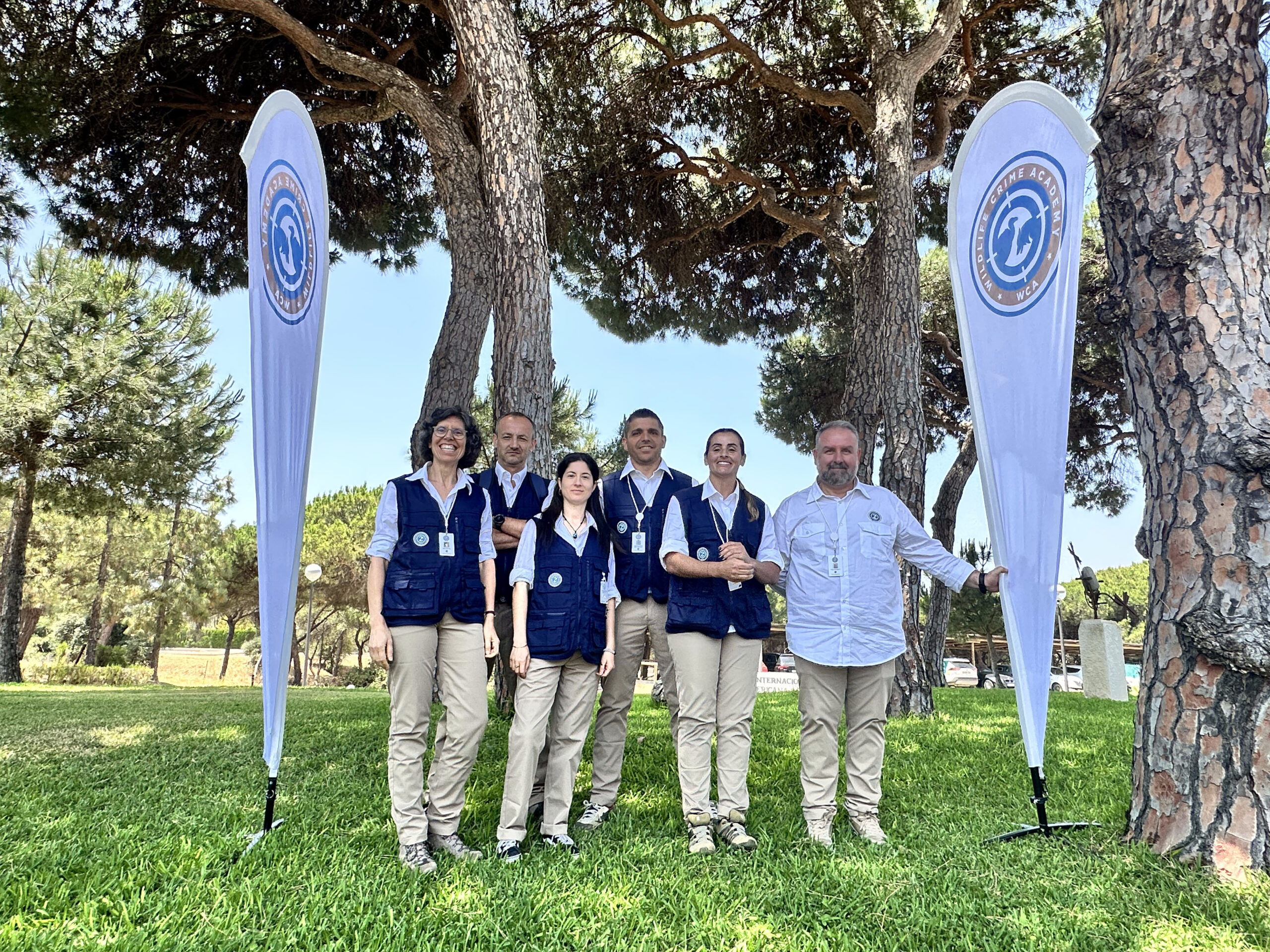Cinereous Vulture Esperança (which means “hope” in Portuguese) was released in 2021 after being rehabilitated in a wildlife rescue centre. Last week, after the GPS transmitter started sending suspicious data, we urged our colleagues in the province of Aragon (Spain) to visit the location and check the bird’s condition. Is there hope for Esperança?

Cinereous Vulture Esperança was released in Portugal
Young Cinereous Vultures (Aegypius monachus) often face difficulties finding food and replenishing the energy spent in the first weeks after fledging. Esperança hatched in the wild and was found in the late summer of 2021 in a fragile condition. The bird was rescued and transferred to the veterinary hospital of the University of Trás-os-Montes and Alto Douro (CRAS-UTAD in Vila Real), where she recovered weight, muscle and strength under the attentive care of the veterinary team.
Esperança was one of the birds released in Northern Portugal in October 2021. However, her release might have been shadowed by another bird, Vouzela, that was set free on that same day: the first Rüppell’s Vulture ever tagged in Portugal.


Vastly exploring Iberia: the moves of Esperança over the last two years
After the release, Esperança wandered around the Douro International Nature Park but didn’t take much time to step into Spain, which she has been vastly exploring in the last two years. She moved northeast to Valladolid, visited the Asturian mountains, moved south to Extremadura around the Monfrague National Park, and ventured into Portugal again to explore the Alentejo region and Herdade da Contenda (which holds one of the Portuguese Cinereous Vulture colonies). In the last months, she mainly roamed across the Serranias de Cuenca.

Suspicious data received from Esperança’s GPS transmitter
Following vulture movements with GPS transmitters is an important monitoring tool that we at the Vulture Conservation Foundation (VCF) rely on a lot. All birds reared in captivity, and many juvenile vultures rehabilitated, are fitted with a lightweight GPS transmitter before being released in the wild. It provides us with the real-time location of the bird and movement data from which we know if a bird is resting or flying and, in general, if the bird is doing fine.
Last week, our monitoring team realised that Esperança was not moving much. We contacted local partners at the Regional Government of Aragon, who swiftly arranged a team to check the last coordinates received. What would they find there?
There is a glimmer of hope: (only) Esperança’s GPS was found
Upon reaching the location, the situation became apparent: the GPS transmitter had fallen off her back. The GPS was discovered amidst the remains of a presumably red deer, whose flesh, muscles and organs had been consumed. When vultures find a carcass, they often congregate in large numbers and viciously fight for their share! That’s possibly what happened with Esperança. We have hope that Esperança is still somewhere out there, soaring the skies of Iberia.


The importance of rescuing and tagging birds
In 2018, we provided the GPS tag for the first Cinereous Vulture to be tracked using a GPS transmitter in Portugal, with the support of MAVA, and we continued to tag more birds ever since. You can follow these birds online by visiting the maps that are generated from the data collected from the GPS transmitters.
This year, thanks to the ongoing conservation efforts of the LIFE Aegypius Return project, which started one year ago, we have tagged and released another two Cinereous Vultures that were rehabilitated, Zimbro (in March) and Gerês (in August). Where are they now?
Cinereous Vultures in Portugal
The Cinereous Vulture became extinct as a breeding species in Portugal in the 1970s, mostly due to poisoned carcasses targeting unwanted predators. An increasing population in Spain led to the species’ natural expansion to Portugal, with the first successful reproduction in 2010 in the Tejo International Nature Park and in 2015 at Herdade da Contenda. Since then, the population has been slowly expanding, with 40 estimated pairs spread over four colonies along the Portuguese Eastern border.
The LIFE Aegypius Return has the ambitious objective of doubling the existing population by 2027 and, by doing so, downgrading their conservation status from “Critically Endangered” to “Endangered”. Besides mitigating Cinereous Vultures’ main threats and creating better habitat and nesting conditions, our local partners had an intense season monitoring the colonies and tagging the new hatchlings in the nest!
Learn more about the LIFE Aegypius Return project on its dedicated website:

We are very thankful to the Environmental Department of the Aragon Regional Government for swiftly checking the location of Esperança’s GPS.



